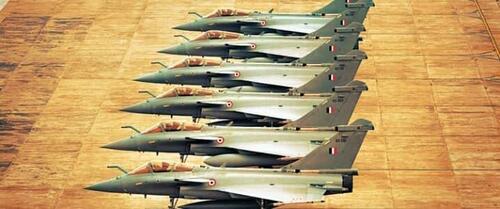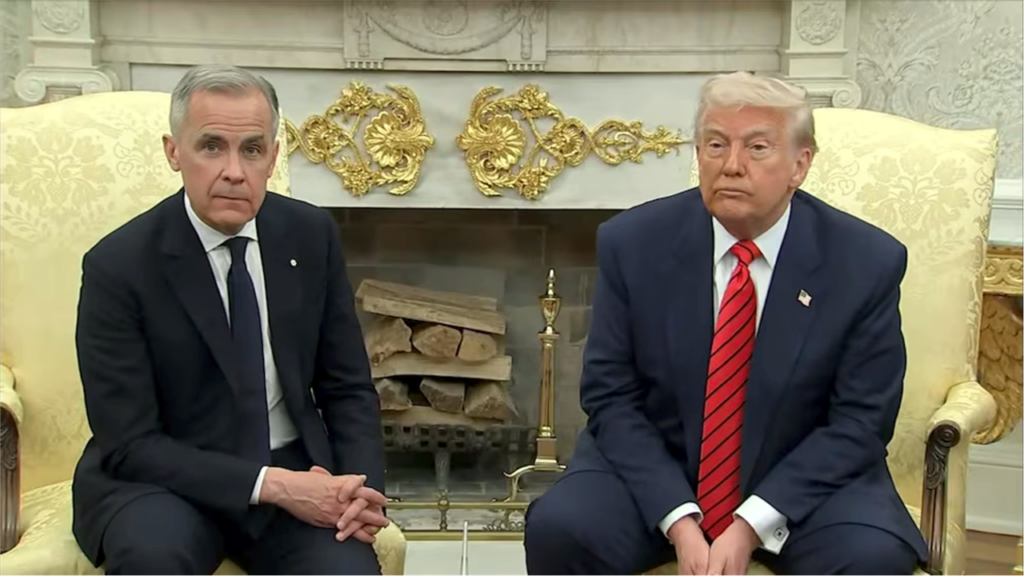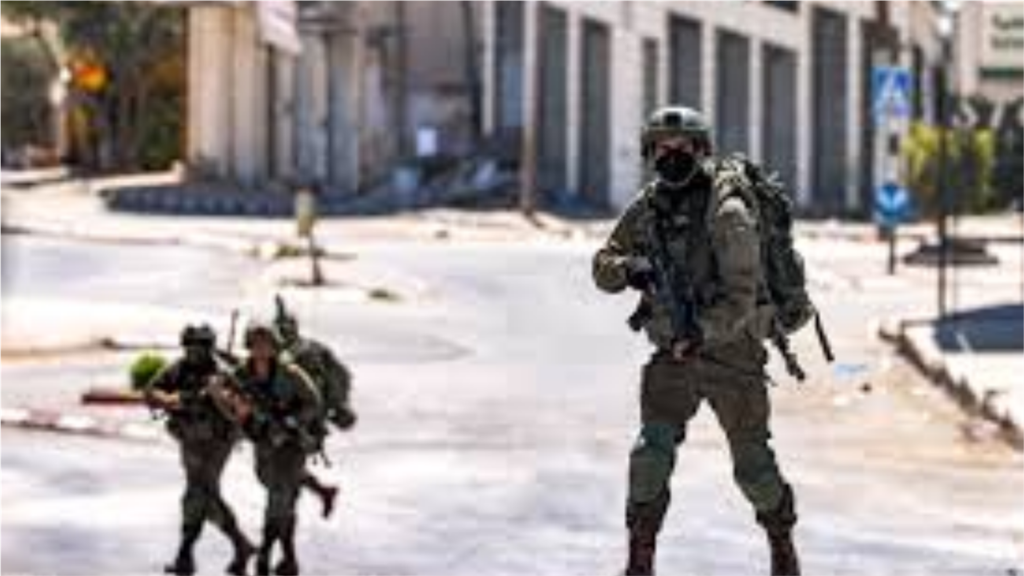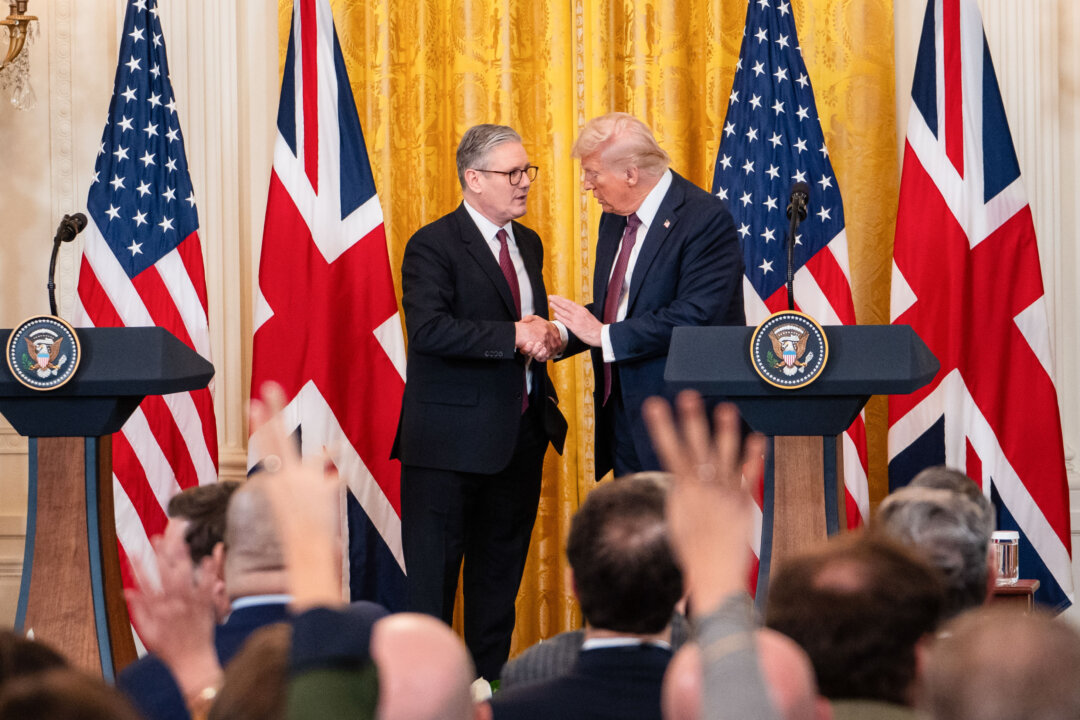How An India-Pakistan War Could Derail Central Asia’s Future

Authored by James Durso via OilPrice.com,
-
A war between India and Pakistan would significantly destabilize Central Asia, disrupting trade routes, delaying infrastructure projects, and increasing regional militancy.
-
China, Russia, and the U.S. may intensify involvement in Central Asia, leveraging the conflict to protect or expand their influence.
-
Potential nuclear fallout, refugee flows, and the breakdown of regional cooperation could severely impact Central Asia’s economic development, security, and food systems.
If India and Pakistan spiral into war, there will be consequences for Central Asia.
A war between Pakistan and India would likely have significant ripple effects on Central Asia, given the region’s proximity to Afghanistan and flourishing economic ties across the region. The conflict could disrupt trade and energy routes, increase militancy, and draw in major powers like China, Russia, and the U.S., potentially straining Central Asian stability.
Intervention by external powers: The Central Asian republics (Kazakhstan, Uzbekistan, Turkmenistan, the Kyrgyz Republic, and Tajikistan) are already arenas for competition among outside powers. A Pakistan-India conflict could draw these powers into the region more aggressively to secure their interests, though Russia is busy in Ukraine, Turkey is busy in Syria, and U.S. forces are fighting in the Middle East, and Washington is ready to confront China.
China is an ally of Pakistan and sponsor of the $65 billion China-Pakistan Economic Corridor (CPEC). China might deepen its presence in Central Asia to secure trade routes and counterbalance India’s regional influence. This could accelerate Chinese investments in infrastructure and energy projects that will increase trade with the region that totaled $89 billion in 2023, up 27% from 2022, $60 billion of which was Chinese exports.
And China may make further inroads into the Central Asia arms market given Moscow’s need to dedicate all its resources to the Russia-NATO war in Ukraine. This will allow China to broaden its engagement beyond infrastructure projects into the security realm that, up to now, has been limited to anti-terrorism training and intelligence sharing in Tajikistan.
Russia is an ally of India, a buyer of Russian arms, having purchased $60 billion of Russian arms, 65 percent of its total weapons imports, over the past twenty years With its historical ties to Central Asia and shared membership in the Collective Security Treaty Organization (CSTO), Russia might leverage a conflict to reinforce the region’s border security, and increase intelligence sharing and security forces training.
And just in time, Russia has declared it will help the Taliban government fight the Afghan branch of the Islamic State, the Islamic State – Khorasan Province (IS-K).
The United States could focus on Central Asia to counter China and Russia, potentially increasing military or economic aid to Uzbekistan or Kazakhstan, the major economies in the region. Unlike the leaders of Russia or China, no American president has ever visited Central Asia but President Donald Trump could signal increased U.S. attention by visiting the region.
Afghanistan as a flashpoint. Afghanistan, bordering both Pakistan and Central Asia, would likely become a hotspot. The Afghan Taliban’s support for the Pakistani Taliban, the Tehreek-e-Taliban-e-Pakistan (TTP) could further destabilize Pakistan, presenting Islamabad with the prospect of a two-front war, though recent visits by Pakistan’s diplomats, and military and security officials seeking a “diplomat reboot” may be just in time to stanch action by the TTP.
Instability would come to Central Asia via Afghanistan in the form of refugees and energized militants, and economic stagnation in the delay of development projects like the Trans-Afghan railway, the Turkmenistan–Afghanistan–Pakistan–India (TAPI) natural gas pipeline, and the CASA-1000 renewable energy infrastructure construction project.
General disorder may spill insecurity into Tajikistan and Uzbekistan, where cross-border militancy (e.g., the Islamic Movement of Uzbekistan (IMU), which has pledged allegiance to al-Qaeda, and IS-K could surge.
And the instability will cause a slowdown in foreign direct investment that has steadily climbed as has foreign trade in goods and accession to bilateral investment treaties. The region’s economy suffered “lost decades” between the start of the Afghan civil war in 1992 and the end of the NATO occupation of Afghanistan in 2021 and has been making steady progress in connecting to the wider world economy; Turkmenistan and Uzbekistan are completing the World Trade Organization (WTO) accession process, and Kazakhstan and Tajikistan are WTO members.
And just in time for a war, the World Bank is predicting economic slowdown for Central Asia: Kyrgyzstan and Tajikistan will suffer pronounced declines, Kazakhstan’s decline will be less pronounced, and Uzbekistan’s growth rate will remain steady at 5.9%.
The U.S. may try to leverage disorder on Afghanistan’s border with Pakistan to pressure the Kabul government, but that risks empowering Al-Qaeda, IS-K, the hardline Taliban faction in Kandahar, or some combination of the three. Disorder in Pakistan’s Balochistan province, the poorest place in Pakistan, may energize the local separatists and draw in bordering Iran which faces a Baloch insurgence on its side of the border.
India’s Central Asian Ambitions. India’s efforts to access Central Asian and Afghan resources, via Iran’s Chabahar port, could be disrupted, forcing India to seek alternative routes or deepen ties with Russia and Iran, affecting regional alignments, and angering the U.S. which is trying to isolate Moscow and Tehran.
India imports uranium for its nuclear power program from Kazakhstan and Uzbekistan and an uninterrupted supply by the republics will be a sign to India they value their relationship with Delhi.
Trade Route Disruptions: Central Asia relies on connectivity projects like CPEC and the International North-South Transport Corridor (INSTC). A war could disrupt CPEC which links China’s Xinjiang province to Pakistan’s Gwadar port and passes through contested areas like Kashmir. India’s trade routes to Central Asia via Iran and Afghanistan could be jeopardized if conflict escalates or Afghanistan becomes unstable, though if Indian merchantmen are unmolested by Pakistan the impact may be minimized and they will be able to safely dock at Iranian ports.
Tightened border controls will hurt regional trade that was boosted by eased border controls that teased the possibility of a unified regional market, following the resolution of many territorial disputes, a process that began in earnest after the 2016 election of Uzbekistan’s president, Shavkat Mirziyoyev.
The Central Asia republics trade with India and Pakistan and will be reluctant to be drawn into one side’s economic warfare on the other. Kazakhstan, Uzbekistan, and Turkmenistan, the three largest economies in the region, all import packaged medicaments and vaccines from India and mostly food products from Pakistan, and may find it easier to replace the lower-valued agriculture products than disrupting their medical supply chain.
Pakistan and Kazakhstan recently inked a transit trade agreement that would see goods shipped from Central Asia through the Pakistani ports of Karachi, Bin Qasim, and Gwadar, and the start of direct flights between the countries. An India-Pakistan war will bring in the insurance companies who may cancel coverage to aircraft, trucks, and their cargoes, delaying the benefits of the deal.
Spillover of Militancy: A Pakistan-India war, especially if centered on Kashmir, could embolden extremist groups like Jaish-e-Mohammed or Lashkar-e-Taiba, which have historical ties to Afghan and Pakistani militants.
This could inspire increased terrorist activity in Tajikistan and Uzbekistan, where groups like the IMU and IS-K could exploit regional conflict for recruitment and radicalization.
Nuclear Risks: Both nations possess nuclear arsenals, less than 200 weapons each. Even a limited nuclear exchange could cause dire environmental and climatic effects, disrupting Central Asian agriculture and food security, and pretty much eliminating agriculture exports as customers fret about “contamination,” despite the prevailing westerly winds. In Uzbekistan, agriculture contributes about 25% to the Gross Domestic Product and employs about a quarter of the workforce, so the economic (and political) impact would be profound.
Conflict in Pakistan or Afghanistan could drive refugees into Central Asia, particularly Tajikistan, straining resources and sparking ethnic tensions, and destabilizing resource-strapped governments.
India and Pakistan are members of the Shanghai Cooperation Organization (SCO), as are several Central Asian states, and China and Russia. A war could paralyze SCO initiatives, hindering regional security and economic cooperation. Tensions might also exacerbate India-China rivalries within the SCO, affecting Central Asia’s balancing act.
Specific Impacts on Central Asian States
Tajikistan shares a porous border with Afghanistan, making it vulnerable to militancy and refugee inflows. India’s military training programs with Tajikistan could be disrupted, and its newly-refurbished (by India) Ayni Airbase base may worry Pakistan.) As a regional leader, Uzbekistan might seek to strengthen ties with Russia and China to counter instability, however, its trade with South Asia could suffer. Neutral but energy-dependent, Turkmenistan could benefit from Chinese energy demand. As the major Central Asia economy, Kazakhstan might leverage its SCO and Eurasian Economic Union ties to mitigate disruptions but could face energy market volatility. Kyrgyzstan is economically fragile and be hit hard by trade disruptions increasing reliance on China or Russia.
Long-Term Implications
Regional Polarization: Central Asia could become more divided, with some states aligning with China (e.g., Turkmenistan) and others with Russia or the West (e.g., Kazakhstan, Uzbekistan), hindering regional unity, which may be in the interests of Washington, Beijing, Brussels, or Moscow.
Securitization: Fear of spillover could lead Central Asian states to increase security spending, diverting resources from economic development. More than half of Central Asia’s population is under 30 years of age and they have high expectations that governments are trying to satisfy by increasing educational and economic opportunity, and diversifying the economies away from agriculture and natural resource extraction, and towards technology, services, and tourism. And more security may come at the expense of civil rights.
Environmental Fallout: A nuclear conflict, even limited, could cause global climate disruptions, devastating Central Asia’s agriculture-dependent economies.
Conclusion
India has been active in Central Asia with its Connect Central Asia Policy, which aims to enhance trade, connectivity, and diplomatic engagement, and hinges on India’s development of Chabahar port in Iran, though the Trump administration rescinded the sanctions waiver on Chabahar. Washington’s fixation on Iran, specifically ruining its economy to press it for a favorable nuclear deal, may see India and Central Asia as collateral damage.
The republics import higher value goods from India (Packaged Medicaments) than they do from Pakistan (food products), and sell uranium – a strategic good – to India. India has a larger market than Pakistan and is a provider of technology products that Pakistan cannot match, and the republics’ future is with India, though they have no reason to antagonize Islamabad.
A Pakistan-India war would destabilize Central Asia by disrupting trade, fueling militancy, and intensifying great power rivalries. The region’s proximity to Afghanistan and reliance on connectivity projects make it particularly vulnerable. Central Asian states would face economic strain, security threats, and pressure to align with external powers, potentially fracturing regional cooperation. The nuclear risk underscores the catastrophic potential, with global climatic effects threatening Central Asia’s food security and economic stability. To mitigate these risks, Central Asian states might pursue neutrality, strengthen SCO ties, or seek mediation roles, but their limited clout may constrain effective responses.
Loading…














